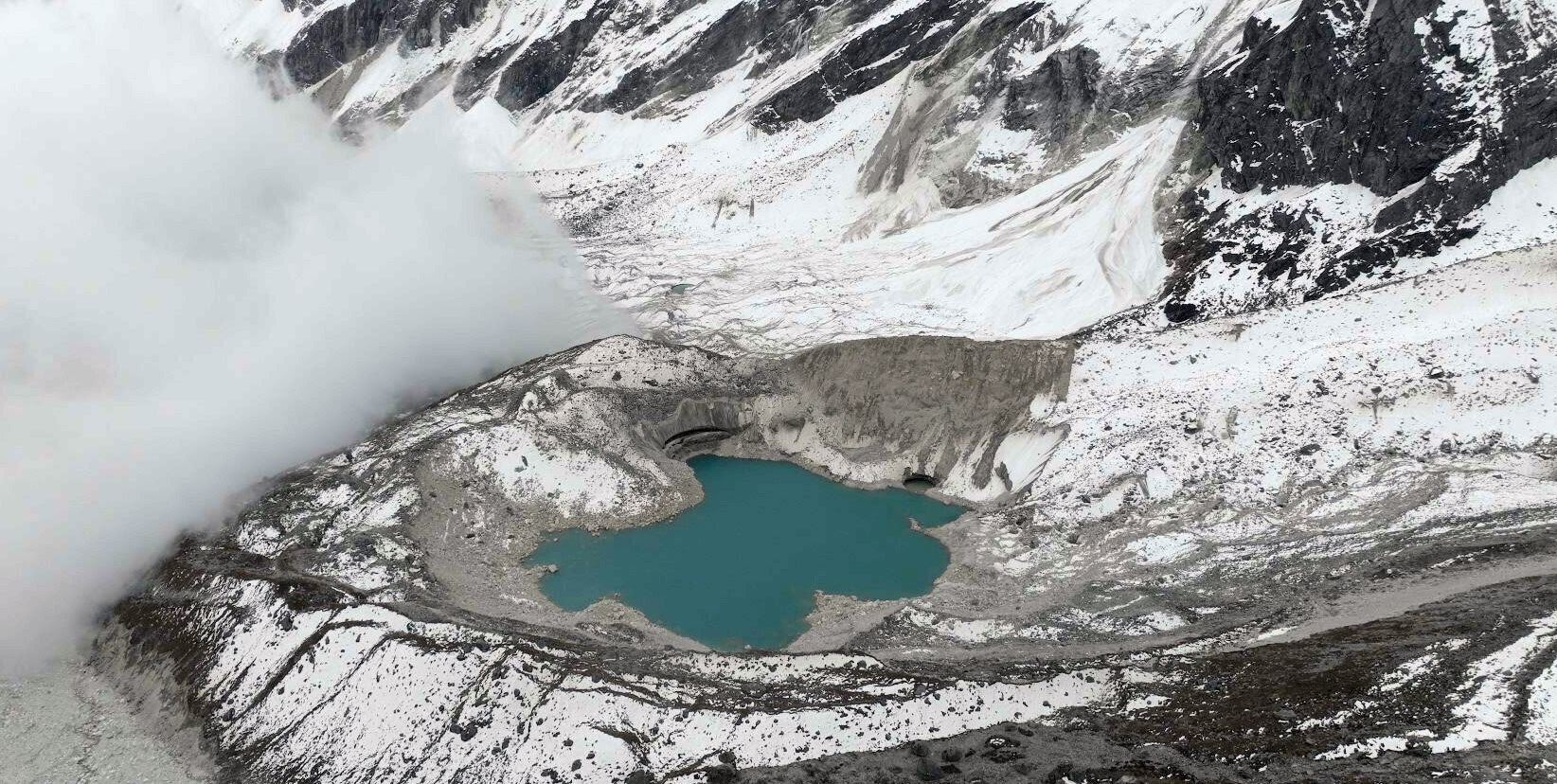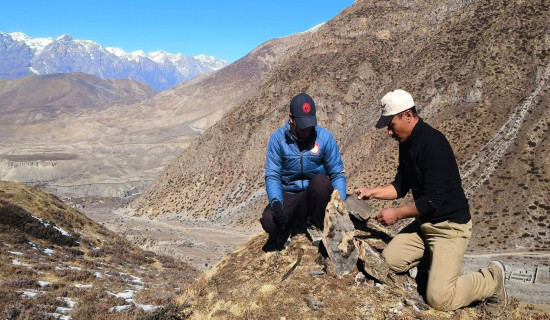- Monday, 1 December 2025
Everest region a hotspot of cryosphere hazards: New study
By A Staff Reporter,Kathmandu, Oct. 16: A new study published on Tuesday about the 2024 glacial lake outburst flood in the Everest region found that a “devastating and complex chain reaction” of natural factors made the flood even more destructive.
The disaster, on August 16, 2024, wiped out the famous mountain village of Thame in Solukhumbu, Nepal, said a press statement issued by International Centre for Integrated Mountain Development (ICIMOD) on Tuesday.
“Thame Valley Glacial Lake Outburst Flood -- Causes, Impacts and Future Risks,” authored by risk experts at ICIMOD Sudan Bikash Maharjan, Tenzing Chogyal Sherpa and Arun Bhakta Shrestha, confirmed that a rock avalanche triggered a powerful displacement wave when it hit a glacial lake at 4,900 metres, causing the lake to breach and releasing 156,000 cubic metres of water.
This outflow fell 120 metres, amplifying its erosive power -- and hit a second lake, whose moraine-dam then breached, leaving a hole 22-metre high (the height of an eight-storey building) and 51-metre-wide and releasing an additional 303,000 cubic metres of water.
The combined waters transformed into a ‘hyper-concentrated flow of slurry’ as they swept downstream, transporting debris, including large boulders, 80km downstream and eroding riverbanks in its path, the statement said.
According to the statement, a natural narrowing of the river channel (downstream of the Thyanbo outwash plain) combined with the draining of a temporary ponding of floodwaters tragically amplified the flood’s erosive force. This went on to cause erosion and landslides and mobilised large quantities of debris as it moved towards and ultimately covered the entire half-a-kilometre wide valley floor near the Thame Village.”
The flood caused extensive destruction, including homes, a school, a health post, a bridge and damaging a hydropower plant, but thanks to the event’s occurrence in daylight and phased nature of the flood due to the ponding, no loss of life. Nepal has seen over 90 GLOFs since the early 1920s, and the Everest region has withstood five significant events in less than 50 years -- including the 1985 GLOF of Dig Tsho, which struck the neighbouring valley to the Thame event, wiping away a newly constructed hydropower plant.
GLOFs are among the most destructive and prominent hazards in high-mountain regions. Capable of releasing millions of cubic meters of water and debris within hours, they can cause catastrophic damage downstream -- unleashing torrents of water that obliterate communities, devastate infrastructure, and permanently reshape landscapes.
The accelerating impacts of climate change, particularly in the Hindu Kush Himalaya (HKH) region, are compounding these risks. HKH, warming at an average of 0.28 degree Celsius per decade, is experiencing unprecedented glacier mass loss, which has increased by 65 per cent in recent decades compared to earlier periods. This rapid glacier retreat has fuelled the proliferation of over 25,000 glacial lakes across the region, spanning the Amu Darya, Indus, Ganges, Brahmaputra and Irrawaddy basins.Arun Bhakta Shrestha, Senior Advisor at ICIMOD and study co-author, states, “The Thame case shows that glacial hazards are intensifying as the Hindu Kush Himalaya warms nearly three times faster than the global average. In the last two years alone, we have seen several high-altitude hazards including GLOFs, across the region. This points to two immediate needs: more hydrological and meteorological monitoring stations generating real-time information, and engineering measures including bank protection measures to reduce damages from future events.”
The Thame disaster is the latest in a series of events to reinforce the need to translate cryospheric and disaster related science into actionable policy, according to ICIMOD.
















